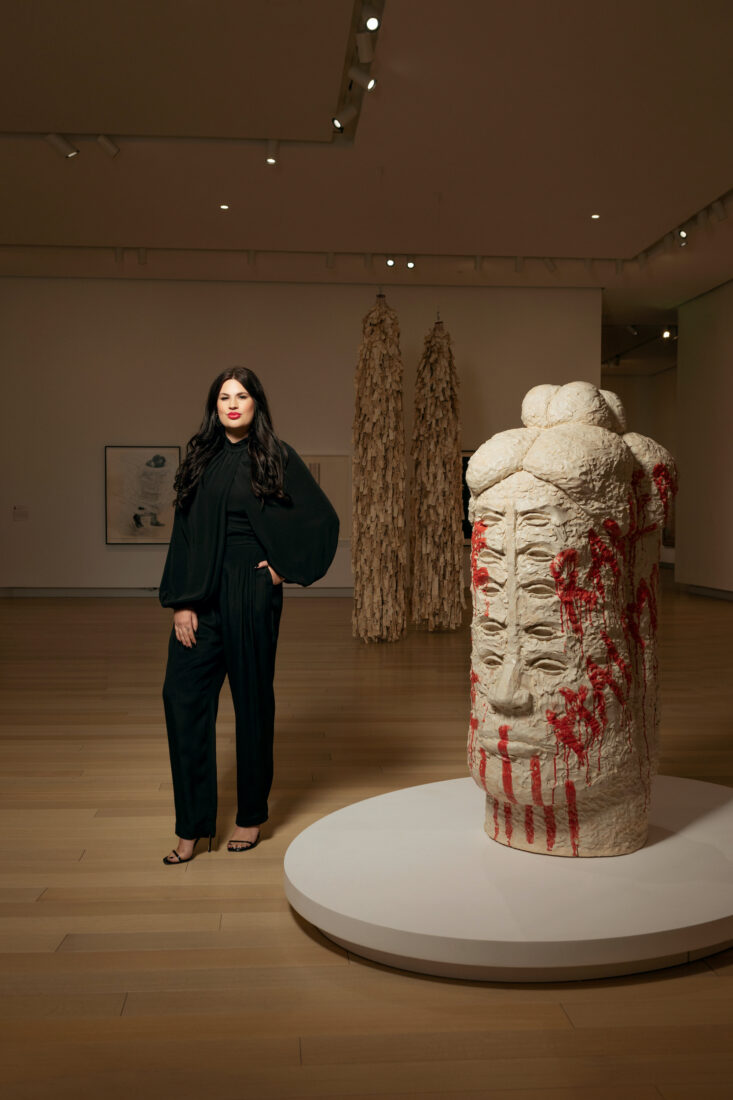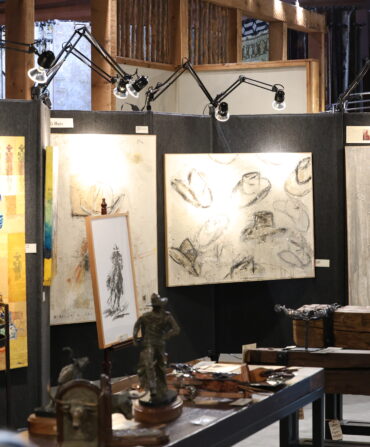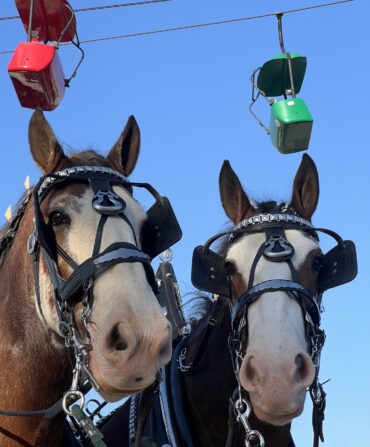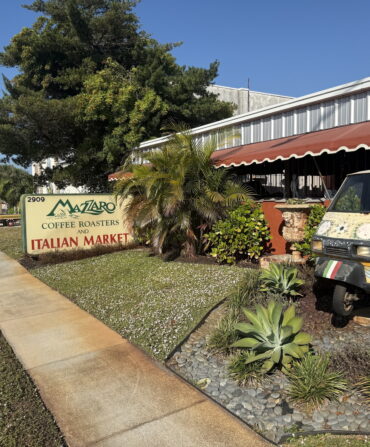Much like the Caddo Nation’s origin story—which recalls the tribe, led by a man named Moon, surfacing from Chahkanina, or “the place of crying”—Raven Halfmoon’s monumental artworks are humbly born from the ground up. Her solo exhibition at New York’s Salon 94 will open this September, filled with drippy ceramic sculptures, some standing from five to twelve feet tall, requiring Halfmoon to work thousands of pounds of clay in her Norman, Oklahoma, studio.

She begins each piece by layering clay coils, orbiting around them to build up the likenesses of horses, totemic portraits, and reclining women whose surfaces ripple with thick white, black, and bloodred glazes and impressions from her fingerprints and nails. She then sets each work—whole or in giant segments—in enormous kilns. “It is physically exhausting,” Halfmoon says. “But it is a labor of love that I want to take on because it brings not only my vision to life, but the spirit of the piece I make.”
Halfmoon’s childhood was steeped in the creativity and history of her Caddo heritage; she learned how some traditions faded after the U.S. government forced the community from the Piney Woods region to Oklahoma territories in the mid-nineteenth century. But her mother, Stacey, worked for the Nation and taught her about ceremonial objects, artifacts, and etched pottery. In her grandparents’ house, Native artwork from Bennie Buffalo, Enoch Kelly Haney, and Archie Blackowl lined the walls. She took up clay at thirteen when her mom introduced her to the Caddo potter Jereldine “Jeri” Redcorn, who taught Halfmoon how the coil-building method links them to past generations.
Today Halfmoon’s sculptures blend faces and bodies from the long line of women (“givers of life”) throughout Halfmoon’s family, collapsing time into singular matriarchal clay monuments. “In many Native communities, women are treasured,” she says. “They are community leaders and respected for their inherent abilities as mothers and matriarchs, and for their wisdom.”
Just as much as she references Indigenous traditions—Caddo face tattoos, effigy vessels from the Mexican Olmecs—Halfmoon nods to contemporary goth fashion, impressionist and color-field painters, and street graffiti. “Native art is fine art, not just folk art, craft, or romanticized art,” she says. “We are continually adapting and continuing our cultures and traditions. We are still here.”
Read more about the South’s new slate of artists, curators, preservationists, movers, and makers in Art’s Rising Vanguard.








